Returning Windows 10 or 11 to their defaults with a factory reset can be a great way to improve performance, clear out old unnecessary software, and make your PC feel like-new again.
Here's how to factory reset Windows 10 and Windows 11 to get your PC feeling right again.
First, back up your computer
Before you reset your system, you’ll want to back up important information that you don’t want to lose. This includes documents, photos, music, and movies, but there are other items to back up as well. Make sure that you know all of your saved passwords, export all of your browser bookmarks, and have installation files for all the software you’ll want to reinstall -- or know where to get them.
Also, make sure you back up app-specific data, like custom filters saved in a photo utility, save files from your favorite games, and back up emails if using an offline client.
How to factory reset Windows 11
The factory reset process for Windows 11 is much the same as it is for Windows 10.
Step 1: Press the Windows + I keys together to open up important pinned apps. Here, look for the Settings menu with the gears icon, and select it.
Step 2: Select Update & Security. Look at the left-side menu and choose Recovery.
Step 3: Select the Reset PC option on the right.
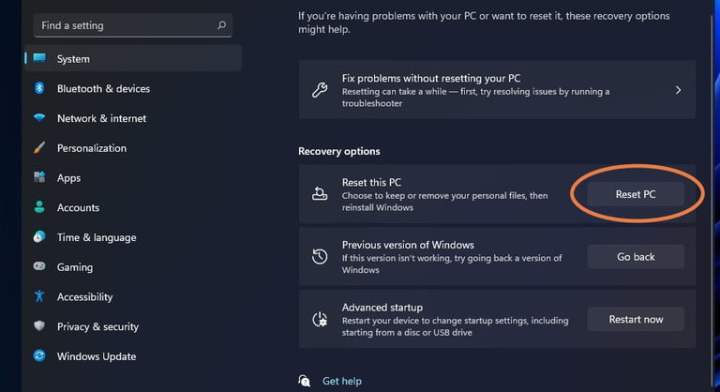
Step 4: At this point, things should look like they do in Windows 10. You will need to choose to "Keep My Files" or "Remove Everything." Then you will be able to choose between a "Cloud Download" and a "Local Reinstall".
Step 5: Here things get a little different. Instead of another Settings menu, Windows 11 streamlines the process for clarification and shows you the current settings you have chosen in a summary window. If everything looks all right, select Next. Do one final check, then select* Reset*.
When you're done, don't forget to adjust your Windows security settings for safer computing and browsing.
How to factory reset Windows 10
Windows 10's reset feature is found in the settings panel. It can rebuild a fresh copy of Windows 10 if you so choose, replacing all drivers and resetting all settings.
Note that this might be technically different from a "factory reset" option provided by manufacturers. Check your documentation or give technical support a call if you want to return your PC to how it was when you first pulled it out of the box. The manufacturer might have special partitions set up on the hard drive or might be able to provide a factory restore image on bootable media.
Step 1: Click the* Notifications* icon on the taskbar (or press the Windows button + A) and then select the All settings tile in the Action Center. You can also select the start button followed by the Gear icon on the Start Menu.
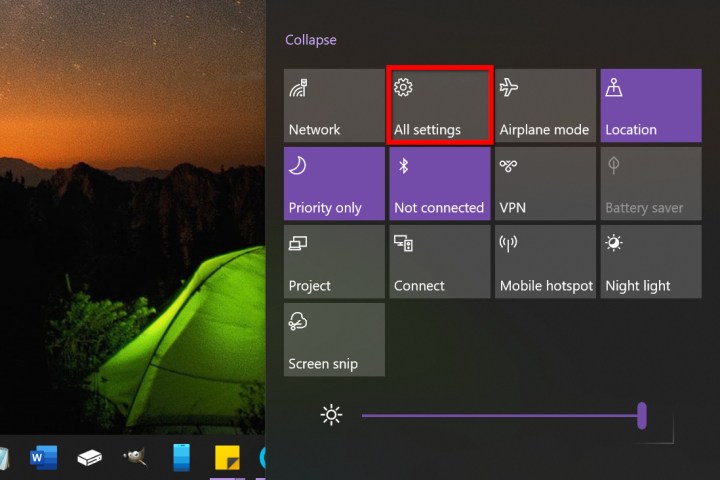
Step 2: Select Update & Security.
Step 3: Select Recovery listed on the left.
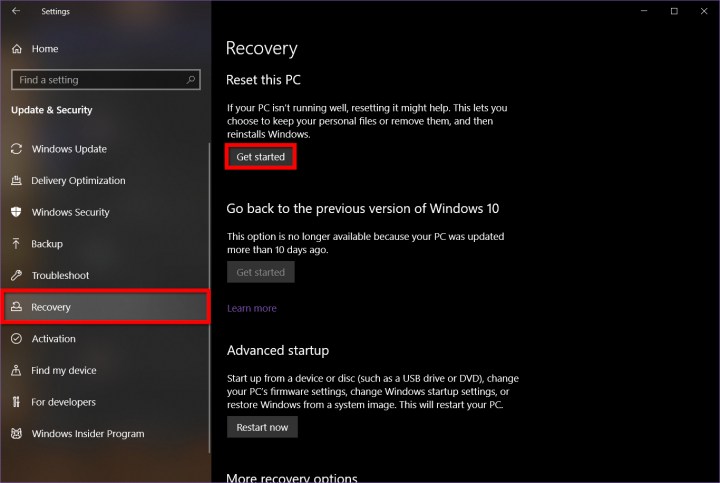
Step 4: On the right, you'll see two options. The first, Reset this PC, is the method we're going to use for this guide. When you are ready, click the Get Started button listed under Reset This PC.
The second, Advanced startup, is worth considering if you have a little more technical skill. It's for modifying your computer on a deeper level or installing a completely different operating system. This comes in handy if your manufacturer provides a factory restore image or external drive containing the image to return your machine to its factory state -- proprietary software included.
Unless you're completely sure you understand what each of the options in this setting does, it's probably best to leave it alone.
Step 5: A new window will appear with two options, Keep my files and Remove everything.
Here you need to decide whether you want to keep all of your files and folders intact, or truly start from scratch and then use your backup to restore those files and folders. Whichever you choose, you will need to reinstall all apps and programs acquired outside the Microsoft Store. Your settings, such as the Start Menu arrangement, will go back to their defaults.
Select one of the two options.
In both cases, it rebuilds Windows 10 using the current installation. It’s Microsoft’s “imageless recovery” system so installation media doesn’t need to lurk on a hidden partition, taking up space. However, the Local reinstall option may not be able to repair Windows 10 if it’s too broken, too corrupted. That’s where the Cloud download option comes in: Windows pulls everything from Microsoft’s servers to rebuild the local copy.
Both options return all settings to their factory defaults and remove all software not installed from the Microsoft Store. However, the Keep my files option keeps your profile intact along with the associated files and folders. What it doesn’t do is update Windows 10 to the latest version if you never bothered to install patches and feature updates. The Cloud download option installs the latest version stored in Microsoft’s cloud.
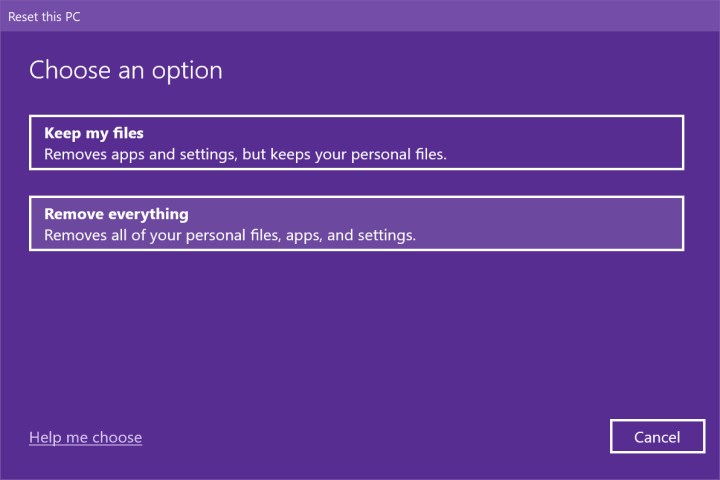
Step 6: Select a source: Cloud download or Local reinstall.
Step 7: On the following screen, select the Choose settings link if you would like to alter the current reset settings. Otherwise, skip to Step 9.
The image is based on the Remove everything option and using the cloud as our source. Since our example PC has multiple drives, we have an additional "Delete files from all drives" setting. Note that you can toggle off reinstallation, but if you’re having serious issues related to Windows 10 components, a fresh copy might be ideal.
Likewise, if we took the Keep my files route and selected the Local reinstall option, we would see two toggles: Restore preinstalled apps and settings that came with the PC, and rebuild Windows 10 using the local installation.
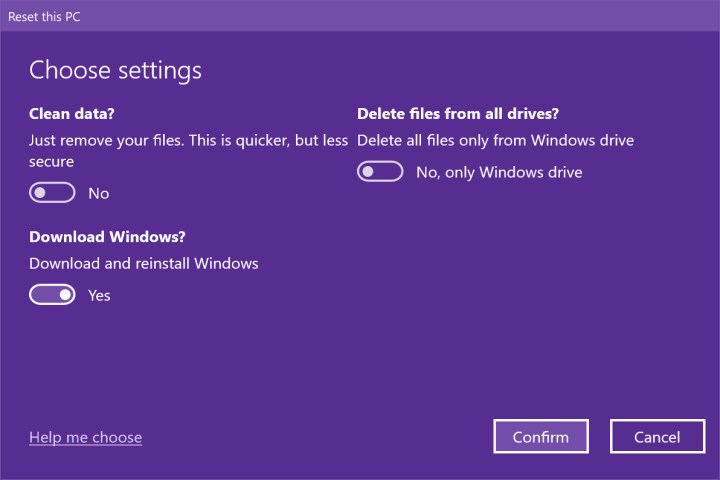
Step 8: Select the appropriate toggle next to the setting you want to alter and then select Confirm.
Step 9: Select Next to proceed.
Step 10: The Reset tool will present a summary. If you chose the Keep my files option, you’ll see a link you can click to see all the apps that will be removed during the reset, like Google Chrome, Steam, and even Microsoft 365. This list will be saved to your desktop when you finish the recovery process. You won’t see this link when you select the Remove everything option.
Make sure you are good with everything, and then select the *Reset *button.
Your PC will reboot automatically and enter the Windows Recovery Environment. The reset process might take an hour or more, so if you’re using a laptop, it’s a good idea to plug in the power cord. It may reboot itself several times. Wait for Windows to restart and begin the setup process, then enter your personal information and login information if prompted.
Once you’ve confirmed everything’s working, make sure Windows 10 is up to date and install the latest drivers from hardware manufacturers.
Another way to factory reset Windows
Another method is to use the manufacturer’s recovery tool, usually located on a separate partition on your hard drive. You’ll find a wide variety of recovery software with name brands numerous enough to match the various brands of electronic devices in which you’ll install them. We have tried to make it less overwhelming by narrowing the list down to our preferred software. Each brand has a different name for what you are looking for, so here is a list of what to search for according to each brand:
- Acer: Acer eRecovery or Acer Recovery Management
- Asus: Asus Recovery Partition or AI Recovery
- Dell: Dell Factory Image Restore, DataSafe, Dell Backup & Recovery, and various other names
- HP: HP System Recovery or Recovery Manager
- Lenovo: Rescue and Recovery or ThinkVantage Recovery (on ThinkPads)
You can also access these recovery options outside of Windows, which means you still have hope if your OS won’t load. Every manufacturer is different, but you can find the method for accessing recovery just after powering on your machine. Read the text as your machine boots and look for the recovery mode key. Many devices use the F11 key as a shortcut to recovery mode.
Factory reset FAQ
Is a factory reset the best way to speed up Windows?
Not necessarily. You can always use our Windows speed up tricks to give your system a boost, but sometimes there's no substitute for starting from scratch
Does a factory reset remove Windows?
No. A factory reset is exactly what it sounds like: It reverts the system to what it was like when you originally purchased it. That means that it will have Windows installed and the most basic of updates, but that's it. You'll have to reinstall most of your applications, and depending on the settings you chose during the reset, may need to add much of your data back to the system too.
But Windows itself is maintained throughout the reset. This isn't a complete format.
How do you completely wipe and reinstall Windows?
A factory reset is effectively a complete wipe and reinstall of Windows, in that it removes all the unnecessary data and applications, and reinstalls a fresh version of Windows. It's not technically a complete wipe, though, and some old data may still be findable if you use the right tools. To completely eradicate your old data, you'll need to use a method known as zero filling, explained in our guide to formatting an SSD.



